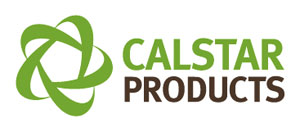Life Cycle Assessment of Building Products
| Hancock Elementary School, Kiln, Mississippi |
||
Architect: EGH Architects, PA Architect Sally Zahner didn't have the luxury of spending more for environmentally friendly products in the new elementary school in Kiln, Miss. Yet through smart decisions and creative designs, Hancock Elementary is on track to achieve LEED Gold certification upon its completion in 2013. Product life cycle assessment was one of the many tools Zahner used to ensure the sustainability and viability of the structure. The 64,000-square-foot school replaces an existing 50-year-old structure that was riddled with mold and crumbling in the coastal environment. The project team saved funds by capitalizing on the existing site and recovering 94 percent of the demolition waste. Zahner then employed product comparison tools for several category specifications. In comparing floor coverings, analyses showed vinyl composite tile and bio-based tile were comparable on cost and aesthetics, and both were local materials. However, bio-based tile was found to have significant advantages with respect to recycled and renewable content. In comparing fly ash brick to traditional clay brick, again Zahner found comparable pricing and looks, but selected fly ash brick for its higher recycled content, 84 percent lower carbon footprint, and 81 percent lower energy use. With the brick, Zahner was able to use a published EPD as the basis for information and comparison. For the floor covering, she requested information from the manufacturer about raw material content and other environmental attributes. While this level of product investigation required some additional work, the resulting decisions provided for better green building performance and documentation that was used to obtain additional LEED credits. |
Conclusion
When designing green buildings, architects, engineers, and others engaged in the process have needed reliable data and solid comparative tools to use. The LCA process for products provides such a process and serves as a reference tool against which different products and materials can be compared. Benchmarking based on certification standards and quantification of the product's environmental impact is becoming necessary elements of green building design because they provide a truly transparent method of making apples-to-apples product comparisons. These accurate measurements of the environmental impacts of products and materials enable designers to reduce the overall environmental impact of the building or structure in which they are used. Therefore, this quantification and benchmarking comparison through the use of LCAs that are based on the appropriate Product Category Rules and produce reliable Environmental Product Declarations is quickly becoming the next step in green building design.
As has been often observed, if you don't measure it, you can't manage it! In this case, if you don't use the tools that quantify the environmental impacts of products, you can't design a building that is verifiably green and sustainable.
 |
CalStar Products has reinvented masonry to make it more sustainable and more affordable. Our masonry products represent a significant improvement in environmental performance over fired clay and concrete products including 37% recycled content, 84% smaller carbon footprint and up to 81% less embodied energy. www.calstarproducts.com |
This course earns LEED BD+C credits









